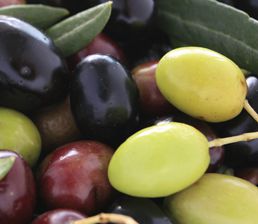 The Australian Olive Association represents the biosecurity interests of olive producers and the industry. They are members of Plant Health Australia and signatories to the Emergency Plant Pest Response Deed. Their responsibilities include:
The Australian Olive Association represents the biosecurity interests of olive producers and the industry. They are members of Plant Health Australia and signatories to the Emergency Plant Pest Response Deed. Their responsibilities include:
- biosecurity planning and implementation at the national and farm levels
- liaising with federal and state governments on trade issues
- funding and supporting biosecurity initiatives
- participating in national committees and response efforts in an emergency.
Industry overview
Ten million trees are grown on 450 commercial groves covering 20,568 hectares, with 70 per cent of olive trees concentrated across 20 groves.
The Australian olive industry began in earnest in 1990 with the majority of large groves planted between 1996 and 2004. The industry is now regarded as mainstream agriculture and remains an important employer in regional Australia. In 2013 the industry began collecting a levy to fund research, development and extension projects; since then new growers have purchased olive groves and joined the association bringing renewed enthusiasm and vision. In more recent times there has also been significant replanting of established groves with more suitable varieties.
Biosecurity plans, manuals and resources
Expand
 Biosecurity Plan for the Olive Industry
Biosecurity Plan for the Olive Industry
Biosecurity planning provides a mechanism for the olive industry, government and other relevant stakeholders to assess current biosecurity practices and future biosecurity needs. Planning identifies procedures that can be put in place to reduce the chance of pests reaching our borders or minimise the impact if a pest incursion occurs.
The Biosecurity Plan for the Olive Industry outlines key threats to the industry, risk mitigation plans, identification and categorisation of exotic pests and contingency plans. For a copy, please contact PHA on 02 6215 7700 or email biosecurity@phau.com.au.
Pests
Expand
Exotic pests (not in Australia)
The following is a list of documents for high priority exotic pests of olives held in the Pest Information Document Database.
These pests were identified during the development of the Biosecurity Plan for the Olive Industry in consultation with industry, government and scientists. They have been assessed as high priority pests based on their potential to enter, establish, and spread in Australia (eg environmental factors, host range, vectors) and the cost to industry of control measures.
PHA has a range of fact sheets, contingency plans and diagnostic protocols relevant to these pests. Pest risk review documents are also available for some pests. Please contact PHA on 02 6215 7700 or email biosecurity@phau.com.au for more information.
Endorsed National Diagnostic Protocols are available from the National Plant Biosecurity Diagnostic Network webpage.
Other pests
The following is a list of documents for other exotic and endemic pests of the olive industry. Please note that this is not a complete list of pests: rather it includes pests for which documents exist in the Plant Information Document Database.
Some of the documents presented here are not tailored to the olive industry and are included for information only.
 The Australian Olive Association represents the biosecurity interests of olive producers and the industry. They are members of Plant Health Australia and signatories to the Emergency Plant Pest Response Deed. Their responsibilities include:
The Australian Olive Association represents the biosecurity interests of olive producers and the industry. They are members of Plant Health Australia and signatories to the Emergency Plant Pest Response Deed. Their responsibilities include:
 Biosecurity Plan for the Olive Industry
Biosecurity Plan for the Olive Industry



Recent Comments